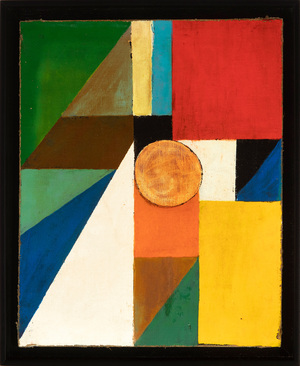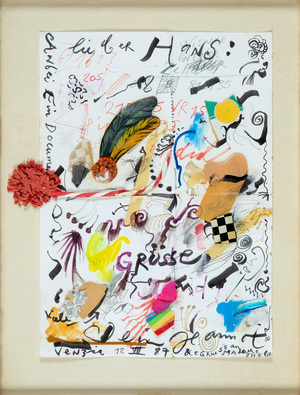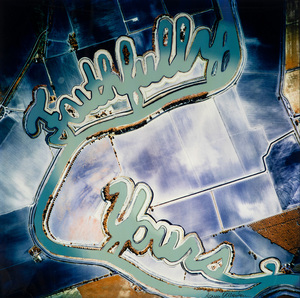Post-war art innovations
The creativity of post-war art is brought together in our auction by the hand of some of its most decisive movements of the 20th century
The diversity and cultural brilliance that emerged after the devastation caused by the Second World War represents one of the most fertile and groundbreaking creative periods in our history. The multitude of artistic expressions that broke into the international scene at a frenetic pace are the manifestation of a vital need of the human being to face the barbarism that he himself had caused . After the profound changes brought about by the war came the end of the artistic utopias that the historical avant-gardes had proclaimed.
The world had changed and with it, it was inevitable that art would too. With a Europe completely sunk physically and morally, the artistic center par excellence that until then had been Paris, moved to the United States where the birth of the first great post-war artistic movement, abstract expressionism, turned the city of New York into the new capital of western art. However, Pollock’s withering dominance of gestural painting prompted the appearance of two counter-movements such as Pop art and Hard Edge.
- HARD EDGE PAINTING – Frederick Hammersley
Used for the first time in 1959 the term Hard Edge (hard edges) defined the sample “Four abstract classicist” where in contrast to the gestural painting of abstract expressionism, four artists from the west coast opted for a rationally controlled geometric abstraction stripped of the emotional substratum close to the aesthetics of Mondrian . Along with John McLaughlin, Lorser Feitelson, Karl Benjamin, Frederick Hammersley was one of the 4 abstract classicists who succeeded in painting simplified shapes, pure colors and neat, clean surfaces against the almighty abstract expressionism.
- POP ART – Peter Philipps
With radically opposed approaches to pop art, it will be born as a revulsive against what they consider an elitist art . Although its origins take place in the United Kingdom, many of its pioneers such as Peter Phillips soon moved to the United States . In his case, the trip he made together with Allen Jones was decisive, touring the roads of the country’s geography where they were able to assimilate the novelties of American pop art. It was then, when in addition to introducing the characteristic monochrome backgrounds and making use of an entire iconography from mass culture, he became interested in large formats and techniques such as spray, which gave his works a more polished and industrial finish. However, his first works were the ones that most clearly connect him with American pop and especially with the work of Rauschenberg and Jasper Jones, in which, as in this case, he transforms the canvas into prize machines, painballs or game boards. On the other hand In Europe, art became a means to find its meaning in a changed world, as a result of which inevitably a host of new artistic styles emerged, including Tachism, Arte Povera, New Realism or conceptual art.
- NEW REALISM – Jean Tinguely
From the exhaustion before the different formulas of abstract painting and the impact of a rapidly expanding consumer society in Western Europe, a series of proposals for a return to “the real” are born . The object, the movement, the performative, and the event are the new interests of European artists who, like Jean Tinguely, grouped themselves around the so-called Nouveau Réalisme,
His work developed around the Dadaist idea of an anti-art where assemblages, waste or “found objects” and the use of movement by gas or electric motors became constants in his work. Movement, chance and the use of everyday materials define not only his kinetic sculptures but also his works on paper in which we find an artist of infinite creativity and fantasy . these letters collage that he sent to countless prominent figures in the world of culture are particularly important documents that teach us about Tinguely’s approach to the creative act, writing down and shaping his ideas, thoughts and desires from his impressions and of everyday or discarded objects which, as he himself stated, “I systematically transform these types of drawings into messages for my friends, in letters and things like that.”
- LAND ART AND CONCEPTUAL ART – Dennis Oppenheim
He is undoubtedly one of the most innovative artists of the 20th century who, as a forerunner of conceptual art and a pioneer of performance, achieved fame and public recognition as part of the generation of artists that made land art known. Oppenheim has also been one of the most versatile artists of his time, taking on all possible forms of artistic expression: from writing to video-installation, passing through Body Art , conceptual art or photography. In fact, everything related to visual art is present in his work as a reminder of the years in which he dedicated himself to advertising.
In the series “Salutations from the sky” to which both works belong, and which gave its name to the exhibition organized at the Gabarrón Foundation in New York, Oppenhiem makes a proposal using aerial photographs intervened by the artist to redirect the flow of the river California Sacramento. Without a doubt, the avant-garde interpretation that the artist made of the environment, and specifically of the connection between heaven and earth, is perfectly illustrated in the works that we present to you.









